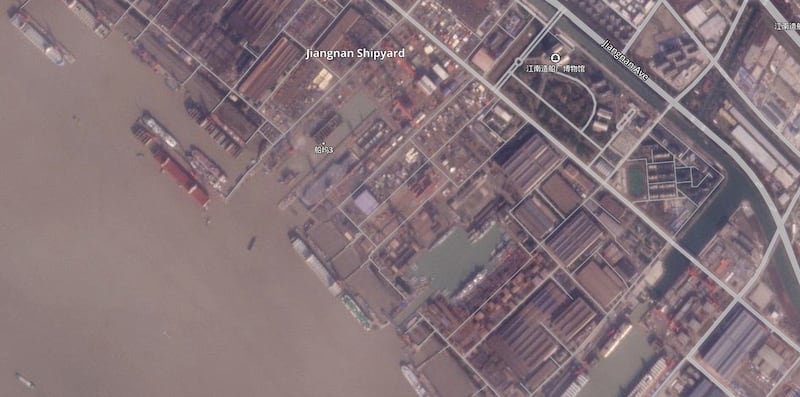China’s third aircraft carrier Fujian appeared to be almost ready for sea trials in a new video released by state broadcaster CCTV.
CCTV's Xinwen Lianbo news program on Tuesday showed training scenes of the People's Liberation Army (PLA), including a short clip featuring the Fujian "completing a recent mooring test."
The report did not specify the date of the test but it was most probably done in late December after a catapult test. In the clip, three electromagnetic catapult tracks were clearly visible on the deck of the carrier.
The catapults, used for launching airplanes from the carrier, were tested in the last couple of months, according to open source intelligence.
Unlike the first two aircraft carriers – Liaoning and Shandong – which use a ski jump-style launch system, the Fujian uses a much more advanced Catapult Assisted Take-Off Barrier Arrested Recovery, or CATOBAR, system.
Satellite images obtained by Radio Free Asia from the U.S. Earth imaging company Planet Labs show the aircraft carrier was moved at the end of December from the catapult testing berth to a dry dock at the Jiangnan Shipyard in Shanghai.
As of Wednesday, it is sitting at Jiangnan’s Dry Dock number 4.

“The Fujian is undergoing mooring tests, as well as final checks and preparations for sea trials,” said Andreas Rupprecht, a Chinese military veteran watcher.
“If everything goes as planned, the first sea trial could be possible within the next few weeks,” Rupprecht told RFA.
Sea trials are an important final step towards commissioning the carrier to the PLA Navy as early as 2025.
Near completion
The 80,000-ton Fujian – also called Type 003 – is China’s third aircraft carrier, built with a fully indigenous design. It is the first PLA carrier equipped with CATOBAR devices similar to the ones on U.S. aircraft carriers.
Currently, only France and the United States are members of the CATOBAR club, and China, having never operated a CATOBAR carrier before, is starting from the ground up in developing one, according to Robert Farley, a senior lecturer at the University of Kentucky.
"As a ship, Fujian is only about 80% as large as existing U.S. carriers, and is conventionally propelled rather than nuclear, which makes a big difference for range, endurance, and carrying capacity," Farley told RFA in November last year.
Andreas Rupprecht meanwhile noticed a mock-up Chinese Shenyang J-15 fighter at the rear of the Fujian’s flight deck. The J-15 already flies from other two carriers, leading observers to believe that it will likely be present in the 3rd carrier’s airwing, too.
The construction of the Fujian aircraft carrier began during the 2010s and the ship was launched in June 2022.
On Nov. 30, Chinese defense ministry's spokesperson Wu Qian told reporters in Beijing that the Fujian construction "steadily advanced as planned."
Aircraft carriers represent China's maritime ambitions and the carrier fleet may be expanded to five ships in the next 10 years, according to a report by the Center for Strategic and Budgetary Assessments (CSBA), an independent U.S. think tank specializing in defense policy, planning and budgets.
To compare, the U.S. Navy has 11 aircraft carriers, most of them of the large “supercarrier” category, which are much more advanced and powerful.
Edited by Taejun Kang and Elaine Chan.
